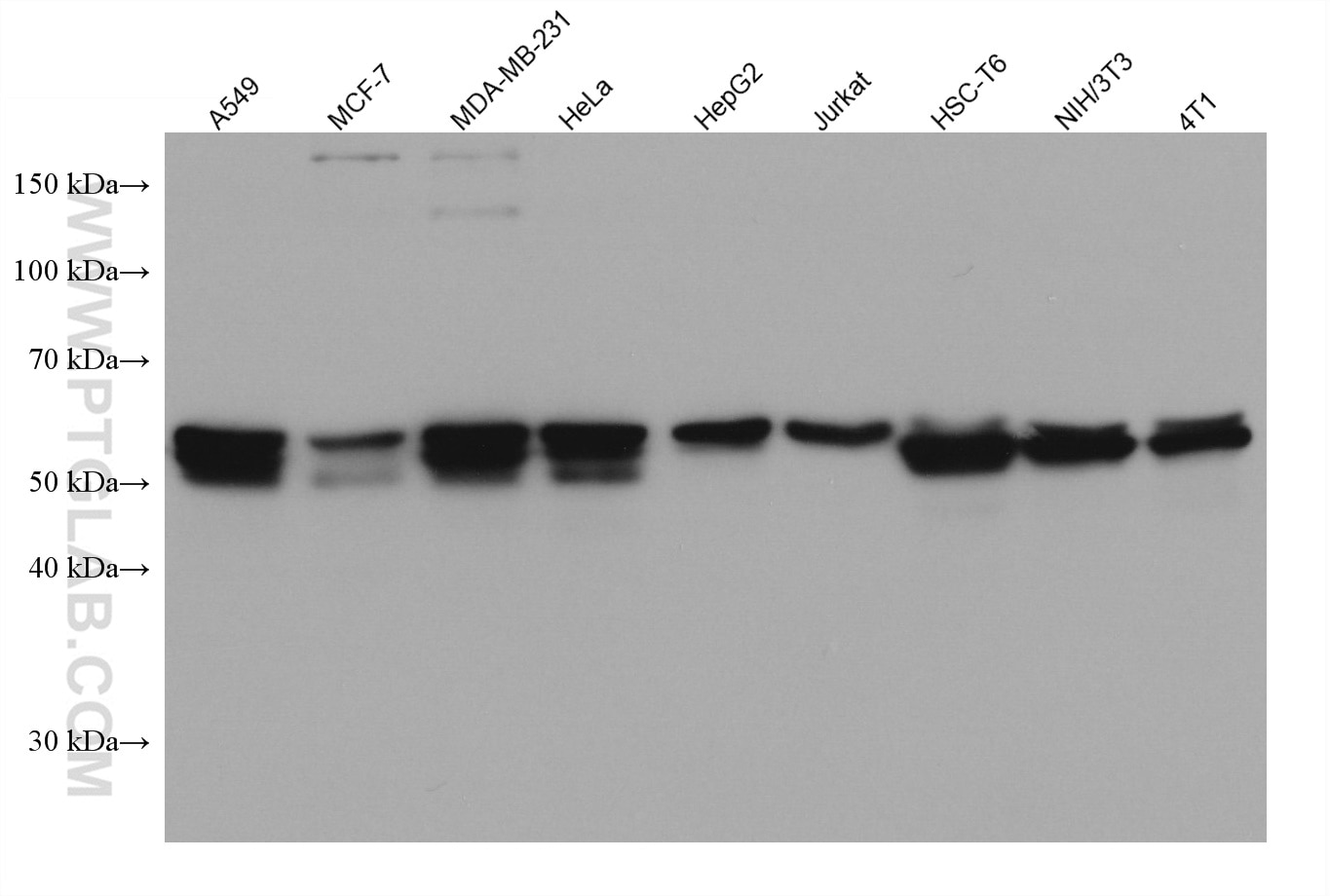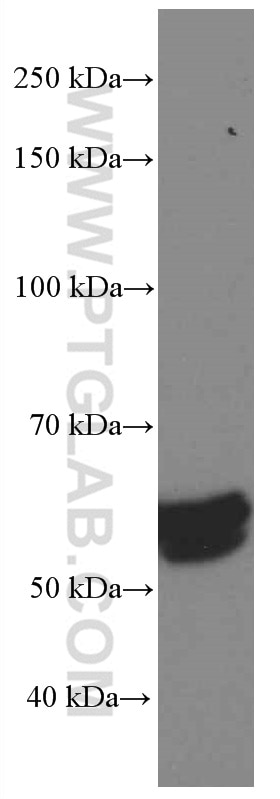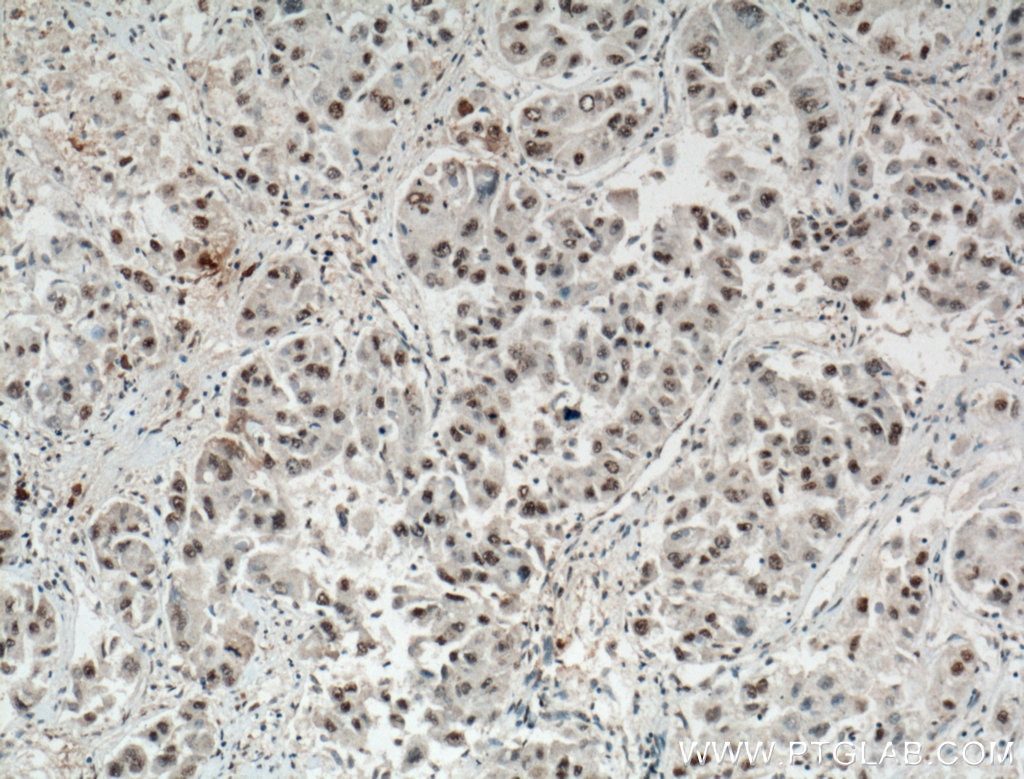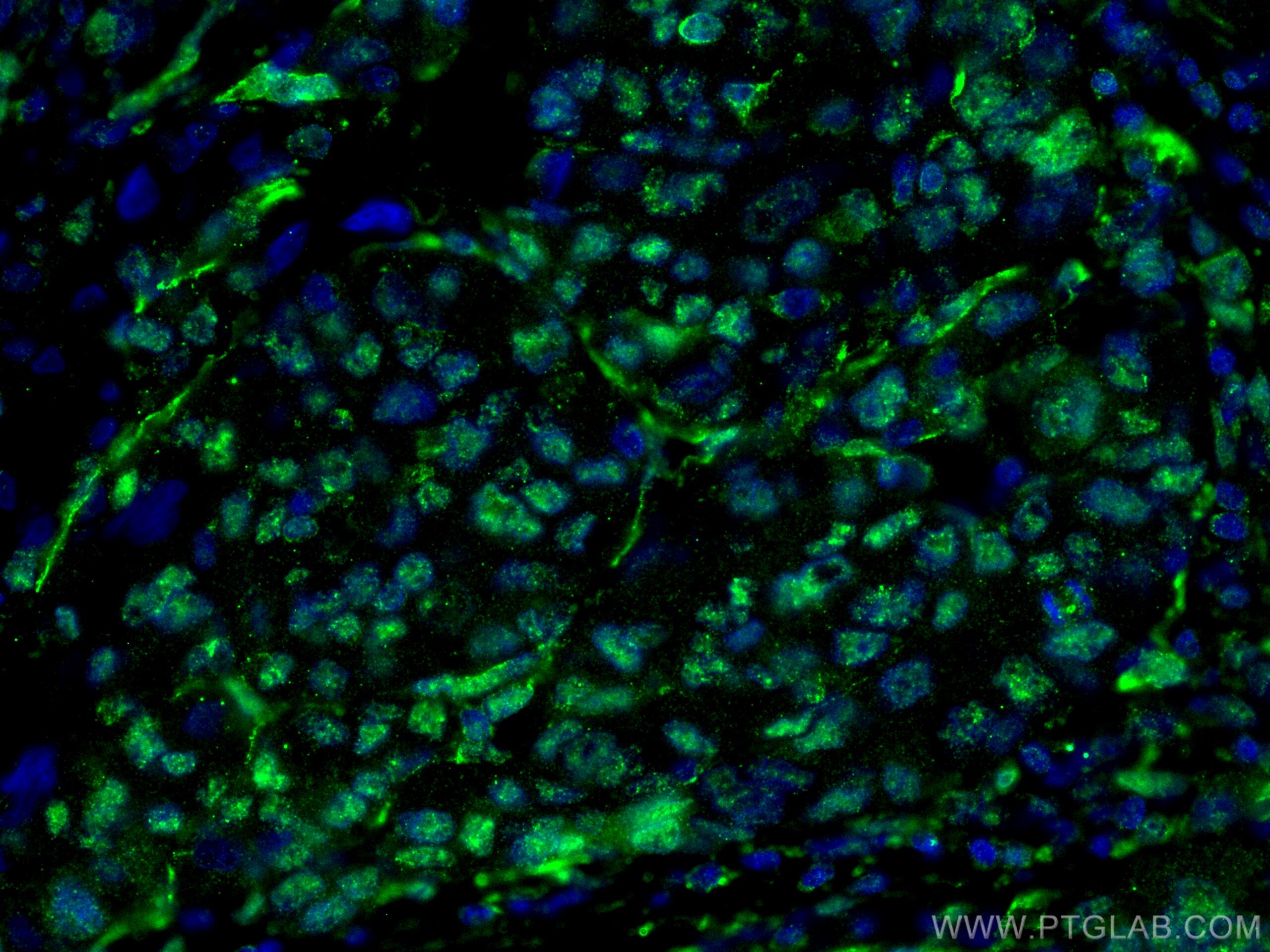- Featured Product
- KD/KO Validated
WWTR1 Monoklonaler Antikörper
WWTR1 Monoklonal Antikörper für IF, IHC, WB, ELISA
Wirt / Isotyp
Maus / IgG1
Getestete Reaktivität
human, Maus, Ratte
Anwendung
WB, IHC, IF, ELISA
Konjugation
Unkonjugiert
CloneNo.
2A12A10
Kat-Nr. : 66500-1-Ig
Synonyme
Galerie der Validierungsdaten
Geprüfte Anwendungen
| Erfolgreiche Detektion in WB | A549-Zellen, 4T1-Zellen, HeLa-Zellen, HepG2-Zellen, Jurkat-Zellen, MCF-7-Zellen, MDA-MB-231-Zellen, MDA-MB-453s-Zellen, NIH/3T3-Zellen |
| Erfolgreiche Detektion in IHC | humanes Leberkarzinomgewebe, humanes Mammakarzinomgewebe Hinweis: Antigendemaskierung mit TE-Puffer pH 9,0 empfohlen. (*) Wahlweise kann die Antigendemaskierung auch mit Citratpuffer pH 6,0 erfolgen. |
| Erfolgreiche Detektion in IF | humanes Leberkarzinomgewebe |
Empfohlene Verdünnung
| Anwendung | Verdünnung |
|---|---|
| Western Blot (WB) | WB : 1:5000-1:50000 |
| Immunhistochemie (IHC) | IHC : 1:300-1:1200 |
| Immunfluoreszenz (IF) | IF : 1:200-1:800 |
| It is recommended that this reagent should be titrated in each testing system to obtain optimal results. | |
| Sample-dependent, check data in validation data gallery | |
Veröffentlichte Anwendungen
| KD/KO | See 1 publications below |
| WB | See 7 publications below |
| IHC | See 2 publications below |
| IF | See 3 publications below |
Produktinformation
66500-1-Ig bindet in WB, IHC, IF, ELISA WWTR1 und zeigt Reaktivität mit human, Maus, Ratten
| Getestete Reaktivität | human, Maus, Ratte |
| In Publikationen genannte Reaktivität | human, Maus, Ratte |
| Wirt / Isotyp | Maus / IgG1 |
| Klonalität | Monoklonal |
| Typ | Antikörper |
| Immunogen | WWTR1 fusion protein Ag13330 |
| Vollständiger Name | WW domain containing transcription regulator 1 |
| Berechnetes Molekulargewicht | 44 kDa |
| Beobachtetes Molekulargewicht | 55 kDa |
| GenBank-Zugangsnummer | BC014052 |
| Gene symbol | WWTR1 |
| Gene ID (NCBI) | 25937 |
| Konjugation | Unkonjugiert |
| Form | Liquid |
| Reinigungsmethode | Protein-A-Reinigung |
| Lagerungspuffer | PBS mit 0.02% Natriumazid und 50% Glycerin pH 7.3. |
| Lagerungsbedingungen | Bei -20°C lagern. Nach dem Versand ein Jahr lang stabil Aliquotieren ist bei -20oC Lagerung nicht notwendig. 20ul Größen enthalten 0,1% BSA. |
Hintergrundinformationen
TAZ, also referred as WWTR1, is a transcriptional co-activator with a PDZ-binding motif that is regulated by its interaction with 14-3-3 protein. TAZ is expressed in many primary tumors, such as breast cancer, thyroid carcinoma, colorectal cancer, and glioma. TAZ has been reported to be one of the nuclear effectors of Hippo-related pathways that regulate organ size control, cancer stem cell (CSC) properties, and epithelial-mesenchymal transition (EMT). TAZ has been defined for its role in the nucleus, where it functions directly as a transcriptional regulator by interacting with several nuclear factors as Runx2/Cbfa1, NHERF-2, TEF-1, TBX5, PAX3, PAX8 and TTF-1.
Protokolle
| Produktspezifische Protokolle | |
|---|---|
| WB protocol for WWTR1 antibody 66500-1-Ig | Protokoll herunterladen |
| IHC protocol for WWTR1 antibody 66500-1-Ig | Protokoll herunterladen |
| IF protocol for WWTR1 antibody 66500-1-Ig | Protokoll herunterladen |
| Standard-Protokolle | |
|---|---|
| Klicken Sie hier, um unsere Standardprotokolle anzuzeigen |
Publikationen
| Species | Application | Title |
|---|---|---|
Cell Death Differ Targeting USP10 induces degradation of oncogenic ANLN in esophageal squamous cell carcinoma | ||
Nat Commun LPA signaling acts as a cell-extrinsic mechanism to initiate cilia disassembly and promote neurogenesis.
| ||
Front Pharmacol TAZ Induces Migration of Microglia and Promotes Neurological Recovery After Spinal Cord Injury. | ||
Am J Transl Res VASN promotes YAP/TAZ and EMT pathway in thyroid carcinogenesis in vitro. | ||
Toxicol Appl Pharmacol Cysteine and glycine rich protein 2 exacerbates vascular fibrosis in pulmonary hypertension through the nuclear translocation of yes-associated protein and transcriptional coactivator with PDZ-binding motif | ||
Stem Cells Dev Reduced DAPK1 Expression Promotes Stem Cell-Like Characteristics of Prostate Cancer Cells by Activating ZEB1 via Hippo/YAP Signaling Pathway. |











